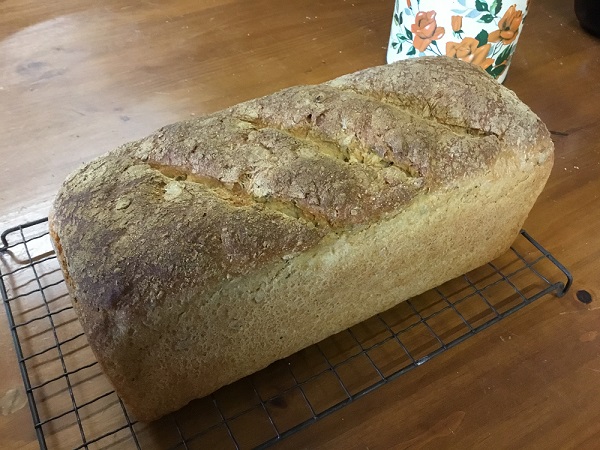
Grains have been planted, harvested, and used for food since the beginning of agriculture. This shift from hunter-gatherer to the farmer is documented to be between 9000 and 7300 BC in an area called the Fertile Crescent (Bellwood, P. 2005, First Farmers, The Origins of Agricultural Society). The Fertile Crescent is a crescent-shaped region in the Middle East, spanning modern-day Iraq, Israel, Palestine, Syria, Lebanon, Egypt, and Jordan, as well as the southeastern fringe of Turkey and the western fringes of Iran (Wikipedia). With the advent of farming, populations boomed, fertility rates increased, and lifespans extended. So I say, let us eat bread, sourdough, of course.
It’s my weekly ritual to get out my sourdough mother and start my next batch of bread. I do this on a Monday to begin my week. As I am away teaching quite a bit, I keep my mother in the fridge and feed her once a week. If you kept your mother at room temperature, you would have to feed her every day, and this would be fine if you were taking some mother out every day to make bread for a large family. Once a week is all I need.
My mother is one kilogram, and I keep her in a large jar in the fridge. I get her out, and using scales and a stainless steel bowl, I weigh out 500 grams. If you do not have a mother, see my blog, Soughdough Bread, Is It Better for Us and Why. You can get sourdough culture here.
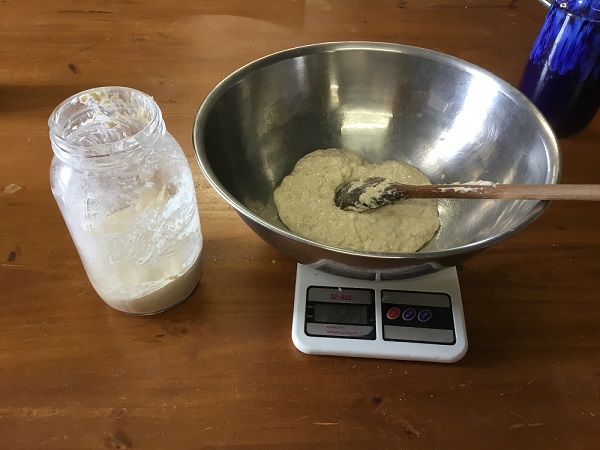
Before I start making bread, I mix up 250 grams of Organic whole wheat flour and 250 ml of water and feed my mother, making her one kilogram again.

Once my mother is fed, I return to my bread-making. To my 500 grams of mother (starter), I add four cups of flour, two cups of water, and a dash (1/4 teaspoon) of iodine-free salt. I also added some seeds. I use whatever I have on hand (sunflower seeds, sesame seeds, flax, and pepitas). Mix these and then add additional flour if needed.
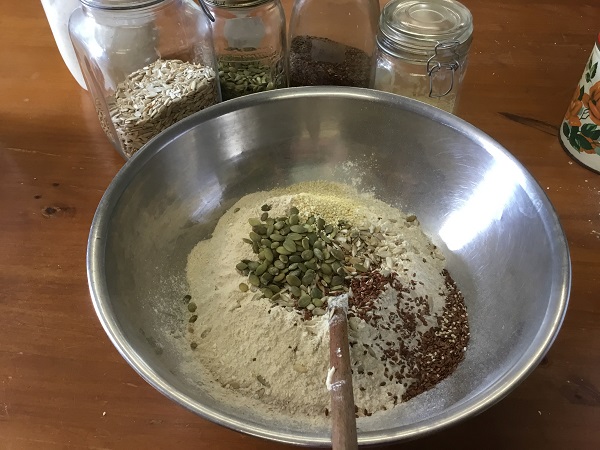
Turn this onto a floured surface and knead until smooth and elastic. Under-kneaded bread can collapse, so don’t skimp on this step.

Once your dough is the right texture, place it in a clean, oiled bowl to rise. This is not a quick bread that uses commercial yeast. You are using a sourdough mother, so expect this to take some time. Slow proving of the bread allows for the development of flavours and gives the bacteria time to break down the damaging peptide(s) in gluten that humans do not digest well. Check out my blog, Soughdough Bread, Is It Better for Us, and Why, for more information on this.
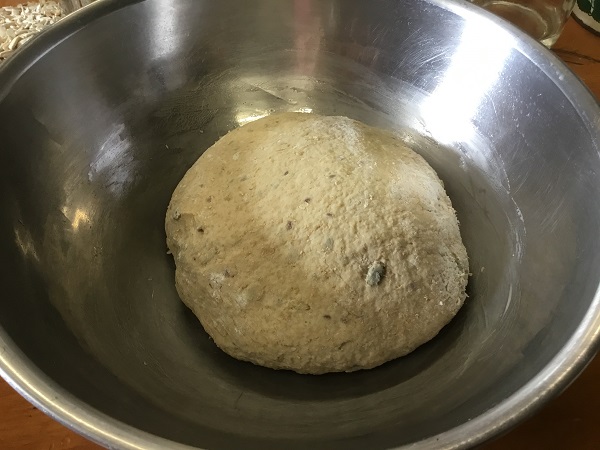
Once your bread has risen for the first time, punch it down, turn it out again, and form your loaf or loaves. I get two small loaves or one large loaf from this recipe. Place the loaves in the bread pan(s) to allow them to rise again.

Once the bread has risen, place it in a 220-degree oven to bake. My large loaf takes about one hour. If I do two small loaves, they take about 45 minutes. I place a roasting pan filled with hot water at the bottom of the oven to increase the humidity while baking the bread. It does wonders for the crust.
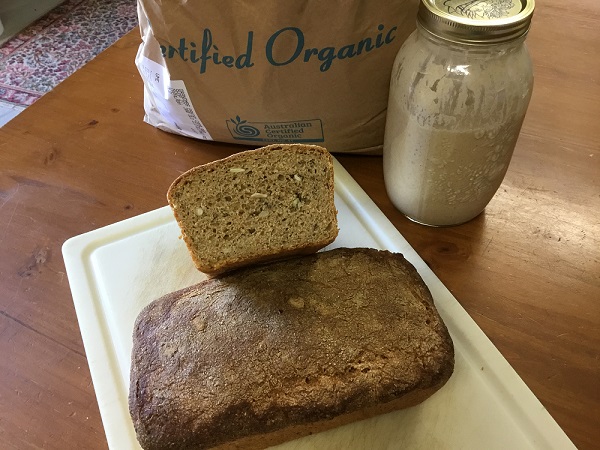
I do this every week, on a Monday, and I have bread for the week. It costs very little, and I know my bread is nutritious and safe to eat with no nasty additives, unlike some in the food industry, which is so willing to poison us for a profit
Making my own bread is just another act of rebellion on my part. Join the revolution and become self-sufficient and financially independent, one skill at a time.
As always, live well.
Valerie
Great helpful hints for making healthy bread. Thanks Valerie.
Hello Valerie, I love everything you do, I only wish I lived in Queensland (rather than country Victoria) so I can attend your lectures/training sessions. I have just ordered my sourdough culture and noticed there was a cloche for cooking the bread in rather than the standard bread tins. Do you now use the cloche or still stick to the tins?
Hi Glenys:
I use both. I like the tins because they give me a loaf I can cut into slices for sandwich making. I also like the cloche for those breads I am going to pull apart and use with soups and stews.
In regards to events, I do travel on request. We had a lovely lady from Canberra say much the same. So we offered to come down. She got a few people together and before yu knew it we hade a week of classes planned. Maybe we could do the same in your area.
Valerie
Hello Valerie. What size loaf tin do you use for your large loaf, please? And have you tried cooking a sourdough oaf in a dutch oven?
Hello Maureen,
My large tin is 30 cm long by 12 cm wide by 11 cm high. I have not used a Dutch oven but I do use a bread cloche. Here is a link to the one I use. https://durand.com.au/bread-cloche-raspberry.html
Now that I have had to look it up, I have fallen in love with the colour. Mine is a nice golden brown, from the same people, but that raspberry one is beautiful. In any case, it cooks wonderful bread, no matter the colour.